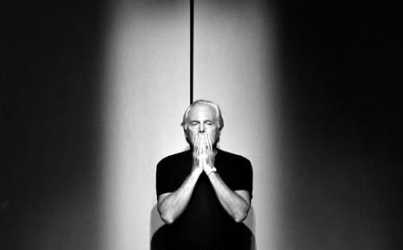Visionary (91) behind the power suit passes away—here’s what’s next for his fashion house
By
Maan
- Replies 0
Giorgio Armani’s name defined elegance for decades, and his designs reshaped wardrobes across the world.
The Italian designer, who built an empire dressing Hollywood stars and global leaders, has died at 91.
His death leaves behind not only a fashion legacy but also a cultural one that continues to shape how we think about style.
He died peacefully at home, ‘surrounded by his loved ones’, according to a statement released by his fashion house on Thursday.
‘Indefatigable to the end, he worked until his final days, dedicating himself to the company, the collections and the many ongoing and future projects,’ the statement said.
The designer had missed Milan Fashion Week in June 2025 for the first time in his career, recovering from an undisclosed condition, yet he had been preparing a celebration for the 50th anniversary of his fashion house this month.
A public viewing will take place at the Armani Theater, though his funeral will be private.
Condolences poured in from political leaders and fellow designers, including Donatella Versace who said: ‘The world lost a giant today. He made history and will be remembered forever.’
Italian Premier Giorgia Meloni, who often wore Armani’s creations, praised him for his ‘elegance, sobriety and creativity’, calling him ‘a symbol of the best Italy’.
Armani first found success in the late 1970s with his unlined sports jacket and muted colour palette, which made his designs instantly recognisable on both Hollywood sets and Wall Street offices.
His looks went on to redefine professional wardrobes, with the women’s pantsuit—dubbed the ‘power suit’—becoming an icon of 1980s business culture.
He also became synonymous with red carpet glamour, dressing stars from Richard Gere in American Gigolo to Anne Hathaway at the Academy Awards.
Source: Instagram/giorgioarmani
By the time of his death, Armani had built a global empire worth more than $US10 billion ($15.3 billion), spanning clothing, accessories, perfumes, cosmetics, home furnishings, chocolates, and even sports, with his ownership of basketball team Olympia Milano.
He expanded into hospitality too, opening over 20 restaurants and two luxury hotels in Dubai and Milan.
Despite his success, Armani remained hands-on, known for his jeans-and-T-shirt uniform, minimalist homes, and his philosophy of ‘easygoing elegance’.
‘I design for real people. There is no virtue whatsoever in creating clothes and accessories that are not practical,’ he once said.
Born on 11 July 1934 in Piacenza, Armani had once dreamed of being a doctor before turning to fashion after working as a window dresser.
In 1975, he and his partner Sergio Galeotti sold their Volkswagen to launch their menswear label, later expanding into womenswear and global fame.
Following Galeotti’s death in 1985, Armani never married and had no children, though he was close to his niece Roberta, who became his director of public relations.
She was often seen representing her uncle at social events and helped bridge his world with celebrities and film stars.
Armani was also a philanthropist, supporting children’s charities, AIDS research, and serving as a UN goodwill ambassador for refugees in 2002.
As tributes continue, his influence on modern style remains undeniable—his designs blurred gender lines, redefined workwear, and elevated simplicity into luxury.
Even in his final years, Armani was said to be considering succession, with his longtime menswear head Leo Dell’Orco and his niece Silvana Armani among those expected to carry on his vision.
The fashion world is not the only place mourning the loss of a cultural giant.
Just as Giorgio Armani redefined style on the global stage, another pioneer shaped how people connected with the wider world through television.
His recent passing marks the end of an era in broadcasting history.
Read more: Television pioneer who brought the world to Australia dies at 98

A towering figure in fashion has fallen, but his name and influence will remain stitched into history forever.
The Italian designer, who built an empire dressing Hollywood stars and global leaders, has died at 91.
His death leaves behind not only a fashion legacy but also a cultural one that continues to shape how we think about style.
He died peacefully at home, ‘surrounded by his loved ones’, according to a statement released by his fashion house on Thursday.
‘Indefatigable to the end, he worked until his final days, dedicating himself to the company, the collections and the many ongoing and future projects,’ the statement said.
The designer had missed Milan Fashion Week in June 2025 for the first time in his career, recovering from an undisclosed condition, yet he had been preparing a celebration for the 50th anniversary of his fashion house this month.
A public viewing will take place at the Armani Theater, though his funeral will be private.
Condolences poured in from political leaders and fellow designers, including Donatella Versace who said: ‘The world lost a giant today. He made history and will be remembered forever.’
Italian Premier Giorgia Meloni, who often wore Armani’s creations, praised him for his ‘elegance, sobriety and creativity’, calling him ‘a symbol of the best Italy’.
Armani first found success in the late 1970s with his unlined sports jacket and muted colour palette, which made his designs instantly recognisable on both Hollywood sets and Wall Street offices.
His looks went on to redefine professional wardrobes, with the women’s pantsuit—dubbed the ‘power suit’—becoming an icon of 1980s business culture.
He also became synonymous with red carpet glamour, dressing stars from Richard Gere in American Gigolo to Anne Hathaway at the Academy Awards.
Source: Instagram/giorgioarmani
By the time of his death, Armani had built a global empire worth more than $US10 billion ($15.3 billion), spanning clothing, accessories, perfumes, cosmetics, home furnishings, chocolates, and even sports, with his ownership of basketball team Olympia Milano.
He expanded into hospitality too, opening over 20 restaurants and two luxury hotels in Dubai and Milan.
Despite his success, Armani remained hands-on, known for his jeans-and-T-shirt uniform, minimalist homes, and his philosophy of ‘easygoing elegance’.
‘I design for real people. There is no virtue whatsoever in creating clothes and accessories that are not practical,’ he once said.
Born on 11 July 1934 in Piacenza, Armani had once dreamed of being a doctor before turning to fashion after working as a window dresser.
In 1975, he and his partner Sergio Galeotti sold their Volkswagen to launch their menswear label, later expanding into womenswear and global fame.
Following Galeotti’s death in 1985, Armani never married and had no children, though he was close to his niece Roberta, who became his director of public relations.
She was often seen representing her uncle at social events and helped bridge his world with celebrities and film stars.
Armani was also a philanthropist, supporting children’s charities, AIDS research, and serving as a UN goodwill ambassador for refugees in 2002.
As tributes continue, his influence on modern style remains undeniable—his designs blurred gender lines, redefined workwear, and elevated simplicity into luxury.
Even in his final years, Armani was said to be considering succession, with his longtime menswear head Leo Dell’Orco and his niece Silvana Armani among those expected to carry on his vision.
The fashion world is not the only place mourning the loss of a cultural giant.
Just as Giorgio Armani redefined style on the global stage, another pioneer shaped how people connected with the wider world through television.
His recent passing marks the end of an era in broadcasting history.
Read more: Television pioneer who brought the world to Australia dies at 98
Key Takeaways
- Giorgio Armani died at 91, leaving behind a $15.3 billion global fashion empire.
- He was known for pioneering unstructured tailoring and the iconic women’s power suit.
- His designs shaped Hollywood style, with credits in over 200 films.
- Armani was a philanthropist and UN goodwill ambassador, supporting global causes.
A towering figure in fashion has fallen, but his name and influence will remain stitched into history forever.








